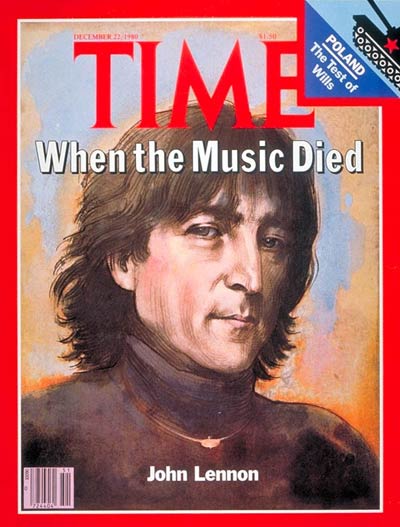 | Just Like Starting OverJohn Lennon |
Writer(s): John Lennon (see lyrics here) Released: October 20, 1980 First Charted: October 24, 1980 Peak: 15 US, 15 CB, 14 GR, 15 HR, 12 RR, 17 AC, 1 CL, 1< sup>1 UK, 17 CN, 14 AU, 5 DF (Click for codes to charts.) Sales (in millions): 1.0 US, 0.5 UK Airplay/Streaming (in millions): 1.0 radio, 20.2 video, 27.96 streaming |
Awards:Click on award for more details. |
About the Song:After John Lennon’s 1975 retirement from music to become a house-husband and stay-at-home dad, he triumphantly returned in 1980 with Double Fantasy. The album emerged out of a vacation to Bermuda during which he started writing again. All the songs were completed within three weeks. TB Sadly, the release of the album and lead single “Just Like Starting Over” at year’s end were tragically overshadowed when Mark David Chapman shot and killed John Lennon on December 8, 1980 in front of Lennon’s New York City apartment. “Starting Over” had already reached the top 10 the week of Lennon’s murder; it would go on to top the Billboard Hot 100 for five weeks. Similarly, Double Fantasy would posthumously top the album chart for eight weeks and take home the Grammy for Album of the Year. The “pleasantly breezy love song” SG was, as its title implies, “supposed to mark a new beginning in Lennon’s public life, not an end to it.” SG However, it took on deeper meaning in the wake of Lennon’s death. Now it was about “a happy middle-aged guy looking forward to a life that he would never get to live.” SG “He does a hiccupy and gimmicky rockabilly-revival thing” SG with his voice while the music is built on “a rock ‘n’ roll rhythm that takes the listener back to the days when John himself was just starting out.” DT Lennon said, “It was a 1950s sound because I’d never really recorded a song that sounded like that period, although that was my period, the music I identified with.” HL Indeed, “shades of Sun rockabilly, Roy Orbison, and the Beach Boys can be heard in the arrangement.” HL He also cited Elvis Presley, Gen Vincent, and Jerry Lee Lewis as influences. SG Resources:
Related Links:First posted 4/9/2023. |










